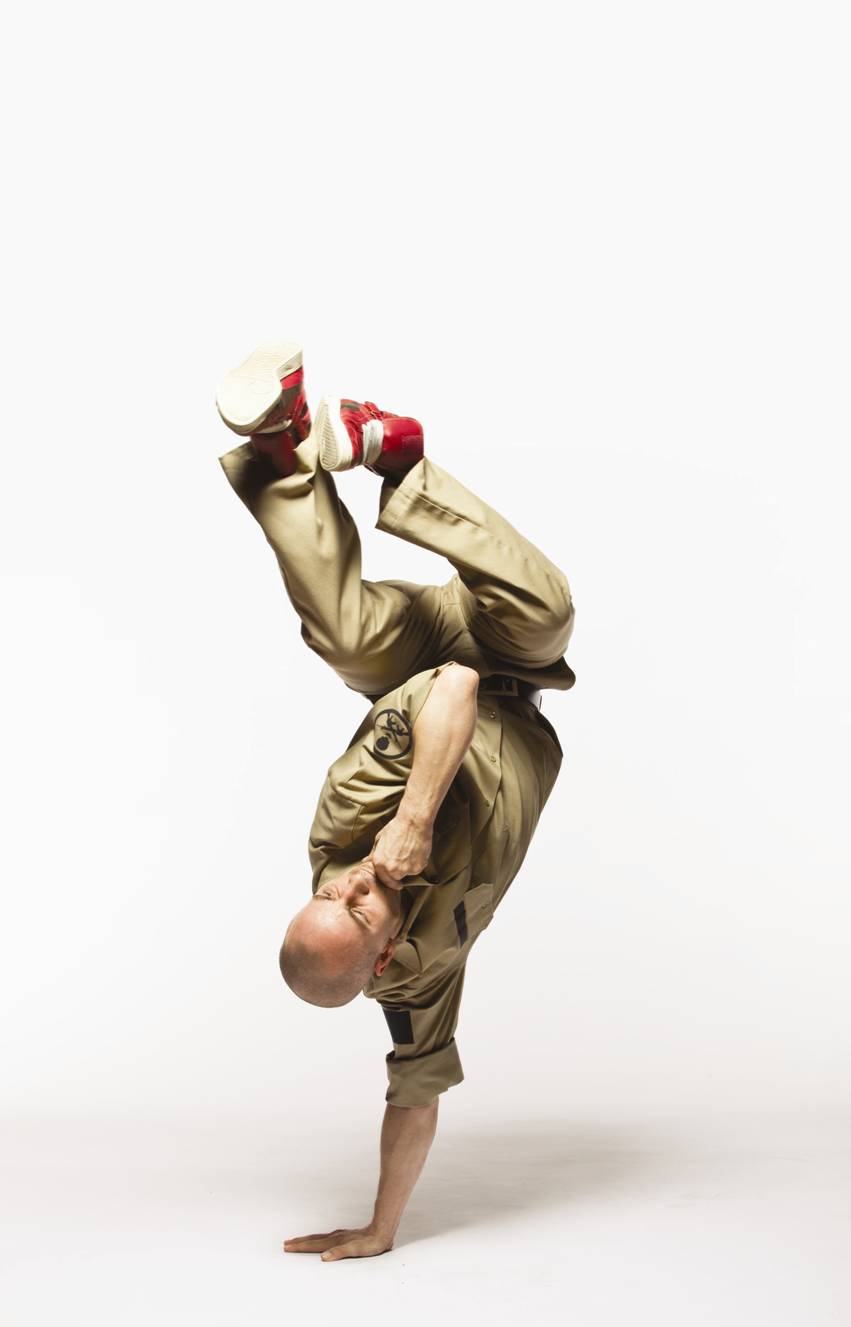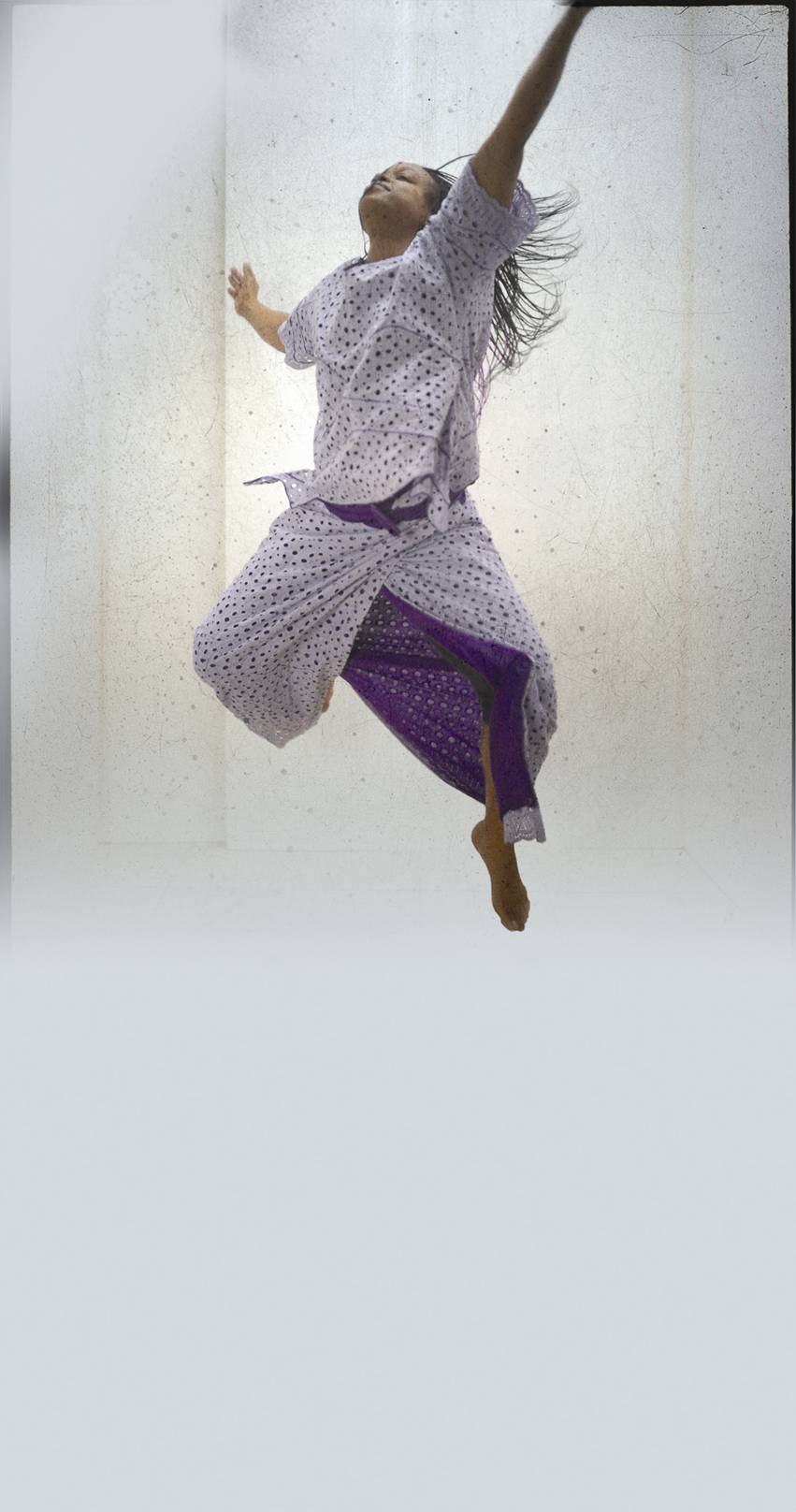Never Dropping a Beat
"Local talent in both these forms runs deep - it's about time someone offered these artists a place at the table." Lightsey Darst, on the recent pairing of Kenna Sarge's African-inflected dance with the hip-hop footwork of The Battlecats at the Southern.


2010 MARKS THE 100TH ANNIVERSARY of the Southern Theater, an occasion for celebration. Despite the Jeff Bartlett debacle of 2008 and the underlying financial problems I’m told are ongoing, the theater looked vibrant and bustling at the first performance of the 2010 season — as it should. This year the Southern offers the most exciting dance season I’ve seen in a while. A case in point is the opener, Kenna Sarge’s African and African-inflected dance matched with the hip-hop of the Battlecats (led by J-Sun Noer). Though local talent in both these forms runs deep, their appearance in mainstream venues has been sporadic at best; it’s about time someone offered these artists a place at the table. Here’s hoping Sarge and Noer will be back next year.
Of the two, Sarge is the more accomplished choreographer. Consider the variety of her three pieces here. First comes the traditional West African dance and drumming celebration, Dedicated to Guinea, in which Sarge shows off her ability to choreograph for and direct Voice of Culture Drum and Dance, a varied group (including children impressively in command of their performance), and to orchestrate a series of crescendos, not to mention her own effervescent dancing. I loved the way Sarge kept finding new patterns for her company, new variations; at the same time, even when she had eight people in three groups going different ways, she didn’t drop a beat.
ER + A is as different from Dedicated to Guinea as you can get within the framework of African-inspired dance: this quiet, yet explosive, dance for two explores the reclamation of the “n-word.” If anyone doubts that the African tradition can produce brooding, subtle, meditative work, this dance is one to see. Sarge and Leah Nelson slip the line between loose freedom and lashing anger, their gestures flipping from high life to high risk in a second, from the stylized slump of a basketball player to a sudden snap, to the smooth suiting of a pimp.
Sarge’s last offering, Hip Not Again, finds five women playing around to the stylings of DJ MaL in a casual atmosphere that’s part rehearsal room, part dance club, as they show off for each other, not the audience. I like the idea of turning the focus, but Hip Not Again didn’t quite work for me: I felt like I was watching a party — I’d rather feel it than see it. And it’s harder to appreciate a DJ’s work than a drummer’s; it’s not clear what’s live about his performance, particularly when the dancers react to music changes in unison.
All that said, it’s an experiment. In the ongoing development of an artist, an experiment doesn’t have to be uniformly successful to be productive. Maybe this one marks territory for Sarge to return to. Sarge is already skilled, but her willingness to take a risk gives good hope for her future.
________________________________________________________
If anyone doubts that the African tradition can produce brooding, subtle, meditative work, this dance is one to see.
________________________________________________________
J-SUN NOER IS A KING of fancy footwork. He finds tiny, impossible spaces and packs buoyant jumps in them; he winds legs this way and that, until you think you’re watching a live M. C. Escher. One particularly wonderful move has Noer falling and rising at the same time. All this inspires a what-did-I-just-see delight — which is the special pleasure that the best step-makers create, whatever dance form they’re working in.
Where Noer is less adept is on the large scale: he applies concepts rather than exploring them. One dance, Remembering, corresponds exactly to the story in the program notes (a sci-fi narrative of trying to find a way to communicate with an alien race), without doing much more with the underlying idea than putting flesh to it. Another (the first section of Stemming Cells) works a military theme. Program notes suggest Noer wants us to feel the tragedy of war, but it’s hard to feel somber when his soldiers are so cool, so slick. One of the Battlecats gets gutshot, but then bounds right back up for some more breaking — it feels more like video game soldiering than the real thing. Noer’s dances also occasionally wear traces of routines: transitions are clunky, and you can catch dancers visibly waiting for the right music.
But Noer’s task is far from easy. As I realize the more I encounter hip-hop, this form comes freighted with a lot of baggage, a lot of obligations which often conflict with the standards of contemporary stage performance: You’ve got to serve the community; you’ve got to make something uplifting; you’ve got to respect the individuality of your dancers (shout-outs, signature moves, and trademark gear abound); you’ve got to respect and carry forward the history of the form — a history that is more narrative than conceptual. To make a contemporary stage dance — that is, to make a work that’s open in its signification, that refuses to conclude, that is at once more than cool moves and inseparable from its moves, that is art first and anything else (service, education, entertainment) later or not at all — Noer would have to drop an obligation of the form, or make those obligations part of the subject matter of the dance. (It can be done: Marc Bamuthi Joseph‘s the break/s is a stellar example.)
But all this brings up another point. I’m assuming that Noer has to come over to the contemporary dance way of thinking, when a lot of contemporary dance would fail by hip-hop’s standards. Naturally, I think my standards are better; don’t we all? Yet, I can’t help noticing the audience’s enthusiasm for Noer’s work. Perhaps what we’ll see in the future is not so much hip-hop conforming to the stage dance world as an aesthetic compromise between the two.
No compromise is necessary, though, to appreciate Noer’s sense of humor. Wonky, goofy, his humor shows in pratfalls that land as steps, goober slides, grandpa breaks, and sight gags — dancers suddenly lining up to render the ascent of man, for example. It’s the flipside to his clever stepmaking, and it marks Noer as a choreographer worth revisiting.
________________________________________________________
Want to see these artists in action? Watch a recent episode of 3-Minute Egg about this show below.
Noted performance details:
Kenna Sarge and The Battlecats recently performed at the Southern Theater in Minneapolis, January 14-17.
________________________________________________________
About the author: Originally from Tallahassee, Lightsey Darst is a poet, dance writer, and adjunct instructor at various Twin Cities colleges. Her manuscript Find the Girl will be published by Coffee House Press in April 2010; she has also been awarded a 2007 NEA Fellowship. She hosts the writing salon, “The Works.”